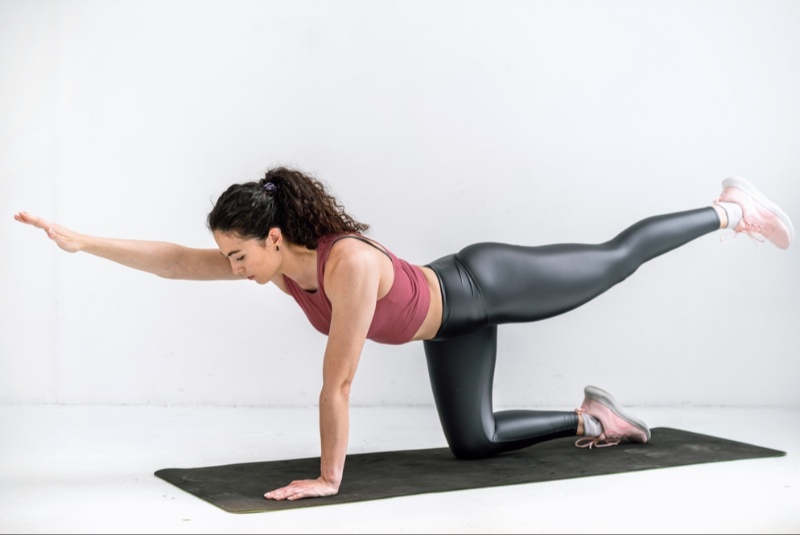Stretching, often overlooked in fitness routines, plays a vital role in enhancing overall workout efficacy and safety. Incorporating stretching before and after workouts can significantly improve flexibility, reduce injury risk, and enhance performance. This comprehensive article delves into the importance of stretching in any fitness regimen, outlining the benefits of different types of stretches, when and how to stretch properly, and common misconceptions about stretching. Whether you're a seasoned athlete or a fitness newbie, understanding the role of stretching can elevate your workout routine and contribute to your long-term health and fitness goals.
The Science Behind Stretching
Stretching involves deliberately lengthening muscles to increase muscle flexibility and joint range of motion. Scientifically, stretching before exercise prepares the body for the stress of physical activity, enhancing muscular performance and decreasing the risk of injury. Post-exercise stretching helps to realign muscle fibers and facilitate recovery, reducing muscle soreness and stiffness. Different types of stretching, such as dynamic stretching before workouts and static stretching afterwards, serve unique purposes in a workout routine, targeting specific muscle groups and preparing the body for the demands of exercise or recovery.
Benefits of Pre-Workout Stretching
Engaging in dynamic stretching before workouts has numerous benefits. Dynamic stretches, characterized by active movements where joints and muscles go through a full range of motion, help to increase body temperature, enhance muscular flexibility, and improve coordination. This type of stretching prepares the body for physical activity by mimicking the movements involved in the workout, thereby reducing the risk of injuries such as strains and sprains. Incorporating dynamic stretches specific to the activity you're about to perform can also improve your performance by optimizing muscle readiness and efficiency.
Advantages of Post-Workout Stretching
Post-workout stretching, often involving static stretches where a stretch is held in a challenging but comfortable position for a period, plays a crucial role in cooling down the body and enhancing recovery. Static stretching after exercise helps to lengthen muscles that may have tightened during the workout. It aids in the reduction of muscle soreness, improves flexibility, and facilitates a quicker recovery by increasing blood flow to the muscles. Regular post-workout stretching can lead to long-term health benefits, including improved posture, reduced chronic pain, and a greater range of motion.
Tailoring Stretching to Your Fitness Goals
Customizing your stretching routine to align with your specific fitness goals can enhance your overall workout efficacy. If you're focused on increasing muscle strength and size, incorporating dynamic stretches that mimic strength training movements can activate the muscles and prepare them for the workload ahead. For endurance athletes, dynamic stretches that enhance cardiovascular readiness and flexibility can improve performance and stamina. Additionally, for those aiming to improve flexibility or recover from an injury, static stretching plays a crucial role in elongating muscles and enhancing joint mobility. By aligning your stretching routine with your fitness objectives, you can maximize your workouts and achieve better results.
The Role of Stretching in Injury Prevention
Stretching plays a pivotal role in preventing injuries, a benefit that underscores its importance in any fitness regimen. By increasing flexibility and range of motion, stretching helps to ensure that muscles and joints work together in a more coordinated and efficient manner. This harmonious movement can significantly reduce the risk of strains, sprains, and muscle tears, particularly in activities that demand quick or extensive movements. Furthermore, by preparing the muscles and joints for the physical demands of exercise, stretching can mitigate the potential for overuse injuries, which are common among both novice and seasoned athletes. Incorporating a comprehensive stretching routine before and after workouts is a proactive approach to maintaining physical health and avoiding setbacks due to injuries.

Integrating Stretching into Your Daily Routine
Beyond the gym or workout sessions, integrating stretching into your daily routine can offer continuous benefits for your physical and mental well-being. Starting your day with a series of gentle stretches can awaken the body and improve blood flow, setting a positive tone for the day ahead. Additionally, incorporating stretches during breaks at work, especially if you have a sedentary job, can alleviate muscle stiffness and reduce the risk of posture-related issues. Evening stretches can help to relax the muscles and mind, promoting better sleep. Making stretching a regular part of your daily life not only enhances flexibility and mobility but also contributes to overall stress reduction and a greater sense of well-being.
How to Stretch Correctly
Proper technique is crucial to gain the benefits of stretching while avoiding potential harm. When performing dynamic stretches, ensure the movements are controlled and related to your workout. Avoid bouncing or jerky motions that can cause muscle tears. For static stretches, aim to hold each stretch for 15-30 seconds, breathing deeply to allow the muscle to relax and lengthen further. It's important to listen to your body and never stretch to the point of pain. Stretching should be a gentle, gradual process that respects your body's limits.
Common Misconceptions About Stretching
Despite its benefits, many myths surrounding stretching persist. One common misconception is that stretching before a workout can significantly impair performance. While overstretching or improper stretching techniques can lead to issues, appropriately conducted dynamic stretching has been shown to enhance, not hinder, performance. Another myth is that stretching is only beneficial for athletes or those involved in physical activities. In reality, stretching is crucial for everyone, contributing to improved mobility, posture, and stress reduction, regardless of fitness level.
The role of stretching in both pre- and post-workout routines cannot be overstated. By incorporating both dynamic and static stretches into your fitness regimen, you can enhance your workout performance, reduce your risk of injury, and improve your overall flexibility and health. Remember to focus on proper technique and listen to your body to maximize the benefits of stretching. Making stretching a consistent part of your workout routine can lead to significant long-term benefits, supporting both your physical fitness and overall well-being.




